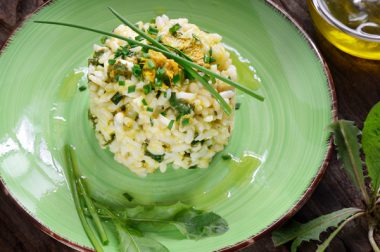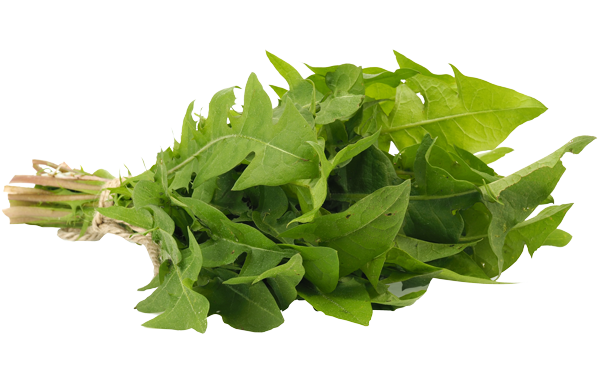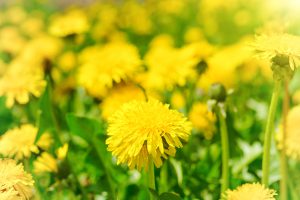Health
benefits
A little-known concentrate of nutrients
Dandelion is very rich in pro-vitamin A or beta-carotene (for skin and tissue health and for night vision) and vitamin B9 (for cell renewal and for growth during pregnancy).
Dandelion is also:
- source of vitamin C (immune system, collagen formation, energy, nervous system, fatigue, iron absorption)
- source of iron (cognitive function, red blood cells, immune system, energy, reduction of fatigue)
- source of vitamin B1 (heart function, energy, nervous system)
- source of vitamin B6 (energy, nervous system, protein synthesis, red blood cell formation, reduction of fatigue)
- source of potassium (nervous system, muscle function, blood pressure)
It also contains:
- calcium
- vitamin B2
Did you know ? Traditional medicine once recommended the consumption of dandelion against lack of appetite and chronic liver conditions. The whole plant is also used for its diuretic, depurative and cholagogue properties (which facilitate the evacuation of bile into the intestine).
Nutritional
composition
When is the right
time to eat them?
Spring.
Young dandelion shoots are tender and very tasty in early spring. In late spring, the dark green leaves are tougher and more bitter.
Vegetable patch or
urban balcony?
Dandelion is a hardy plant that appreciates humus-rich, loosened soil, as well as sunny or partial shade.
Choosing and
storing
To choose your dandelions well:
- The leaves should be as young as possible, that is, with a little white down at the tip, and before there are any buds or flowers (around the end of March).
- Leaves picked after spring, a little darker green, will be a little bitter.
To properly store your dandelions:
- Always keep away from light! Otherwise the leaves will start to turn yellow.
- In the refrigerator: 2 to 3 days in the vegetable drawer.
Tips and
tricks
The dandelion is getting ready…
When picking, cut the leaves as close to the roots as possible. Then wash them, like salad.
Dandelion is eaten raw, especially with young shoots. But it can also be cooked, as with any salad.
Did you know ? Everything in the dandelion is edible! The root is dried and can then be used to make decoctions. Some even eat it fresh, raw or cooked. The leaves can be dried and consumed as an infusion. The flowers are also eaten, fresh in salads, or dried to give a beautiful color to the dish.
Dandelion goes well with…
Raw. It can be used to make delicious salads with eggs, croutons, potatoes, raw ham, but it is also perfect nutritionally and in terms of taste when combined with beets and corn. It can replace all greens in mixed salads.
Cooked. It is generally prepared in soup with potatoes and another “bad” herb, nettle! In Canada, dandelion is used in the composition of a beer that bears its name (dendelion beer).
Tip for replacing arugula. If you don’t have arugula, use dandelion ! Their slight bitterness and crunchy texture are reminiscent of arugula, but milder.
Can everyone
eat them?

Toddlers
Less difficult to chew and less bitter than rocket if the shoots are young, dandelion can be enjoyed by children from the age of 12 months. It is even easier to try cooked, in soup, softened by potatoes.
And all the others…
Dandelion can be enjoyed by everyone. It does not contain large amounts of oxalic acid, unlike sorrel.
Where do they come from?
Origins and varieties
Origins
Dandelion has been known in Chinese and Ayurvedic medicine for thousands of years, and in the West since the Middle Ages.
Varieties
Dandelion belongs to the same family as endives, lettuce and salsify. Improved forms are distinguished from the wild type by a greater precocity of development, more abundant foliage and dense and well-furnished tufts.
Among the most cultivated varieties we find:
- Improved full heart, whose numerous and very cut leaves form a dense tuft of a volume equivalent to an escarole and whose heart tends to whiten naturally.
- Improved Vert de Montmagny is an early variety with broad leaves.
- Improved giant to force, with numerous and very cut leaves, upright.



 Celeriac
Celeriac  Garlic
Garlic  Varietal Improvement and GMOs
Varietal Improvement and GMOs 










